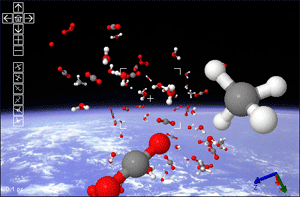Physics Made Easy: your Support hub
Your Physics Transformation Starts Here!
Welcome to a journey through the enthralling world of science, where every action spurs a reaction, every cause has an effect, and balance is the universal rule. In this blog, we unveil five captivating examples of reciprocity in science, showcasing how the principle of ‘give and take‘ is not just a philosophical idea but a fundamental aspect of the natural world.
1. Newton’s Third Law of Motion:
Newton’s Third Law of Motion is a cornerstone of physics. This law exemplifies the science of give and take in physics and states that “For every action, there is an equal and opposite reaction“, illustrating the reciprocal nature of forces and movement. This principle is visible everywhere, from the basics of how we move to the mechanics of celestial bodies.

2. Symbiotic Relationships in Ecology: Beyond physics, reciprocity plays a crucial role in biology, especially in symbiotic relationships. In ecosystems, different species often engage in mutualistic interactions, where both parties benefit. Consider the relationship between bees and flowers. Bees collect nectar and pollen from flowers for nutrition, while simultaneously facilitating the plant’s reproduction process through pollination. This mutualism is a beautiful example of natural reciprocity, showcasing how different species can coexist and benefit from each other, maintaining ecological balance.
3. The Intricacies of Chemical Equilibrium: In the world of chemistry, the concept of equilibrium embodies the essence of reciprocity. Chemical equilibrium is a brilliant illustration of the Science of Give and Take at the molecular level. In this state, the rate of the forward reaction equals the rate of the reverse reaction, demonstrating how chemical processes self-regulate and maintain a balance in a dynamic give-and-take manner. It’s a state of dynamic balance where chemical processes self-regulate to maintain stability. This is evident in various natural processes, including the human body’s biochemical pathways, which rely on this principle to function optimally.
4. The Unbreakable Rule of Energy: Conservation and Transformation: The law of conservation of energy is a core principle of the science of give and take. Energy’s ability to transform from one form to another without being created or destroyed epitomizes this principle. From the natural world to our engineered power systems, energy demonstrates a continuous cycle of give and take. This principle states that energy cannot be created or destroyed, only transformed from one form to another. This principle underpins everything from the functioning of ecosystems to the generation of electricity. For example, in a hydroelectric dam, the potential energy of stored water is transformed into kinetic energy and then into electrical energy. This transformation and conservation of energy illustrate the natural reciprocity of energy flow and its pivotal role in our universe.

5. A Two-Way Street: Our Role in Climate Change:
Human influence on climate change is a stark example of the Science of Give and Take. Our actions, particularly the emission of greenhouse gases, have a direct and reciprocal impact on the global climate, highlighting the critical need for balance in our interactions with the environment.Human activities and their impact on the environment is a stark reminder of the reciprocity principle.
The release of greenhouse gases from industrial activities leads to an increase in global temperatures, affecting weather patterns and ecosystems. This, in turn, impacts human life, agriculture, and natural resources. It’s a clear example of how our actions can reciprocally affect the environment, emphasizing the need for sustainable practices to maintain ecological balance.
Conclusion: The principle of reciprocity in science, manifesting in various forms from physics to ecology, is a guiding force that maintains balance and harmony in the universe. Understanding these interconnected dynamics not only deepens our appreciation of the natural world but also highlights our role within it. By recognizing the impact of our actions and the importance of sustainable living, we can contribute positively to the delicate balance of nature.
